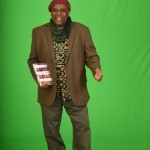I wrote “Taking on Diversity†because I believed I had something important to say to help American’s have productive intergroup conversations in these difficult times.
 Combining my life of work on diversity issues, with my expertise as a social psychologist and my use of that expertise to observe and analyze college students’ responses to social changes in America, I believed I had something important to say. I believed that what I had to say could help young people through our new difficult days of intergroup tension.
 After publishing “Taking on Diversity,†I have been waiting to learn if I was right. Here and there, I have gotten hints (through letters, emails and reviews) that my book helps. But yesterday, I got more than a hint.
 I received an email from Dr. Mark Shelley who teachings at Yavapai College in Prescott, Arizona. At that community college, the students are mostly white, with a good representation of Hispanic people and some representation of American Indians.
 Being at the end of his semester, Dr. Shelley wrote to let me know that he had used my book in his “Race and Ethnic Relations†course. He wanted me to know that my book had been important as a tool in helping his students develop new thinking about intergroup issues in America. Mark showed me the truth of that by sending along some of his students written reactions to reading my book.
 From their final reflections about reading “Taking on Diversity,†here are a few examples of what his student’s wrote.
 –White male, mid-20s: “Taking on Diversity has definitely been a book that made me think, and this is thanks in large part to Nacoste’s unusual perspective as a social psychologist… Many of my pre-existing ideas have been challenged, and some of them discarded for a newer model, and this is the sort of book that I will be thinking about and processing for a long time to come.â€
 -White female, late teens: I enjoyed this book. I found it easier to read than a regular textbook and was able to learn a lot of new ideas and concepts. I think it did change my outlook and made me realize how lightly racial slurs are thrown around. I find myself more aware of this in songs and in conversations I hear around me. Having more education now I will try to be more aware of stereotypes I have and try to not “go along†with others when they make racial jokes.
 -White male, early 20s: “This book has changed the way in which I view people. I used to make side remarks about people. But I have learned ways to communicate to others as anyone else, to not act differently if there is a person of a different race, and how I can control my social anxiety to allow myself to communicate with all people. Reading through the book, I found myself looking at certain things in my life, and made me to reexamine what I am doing with my life. I realized that I use to follow people, and still do today. This book has changed me in the way I think about certain situations, creating better outcomes. Nacoste helps his students in the classroom, as his book helps others look at themselves. “
 -60 year old male veteran: “I found Mr. Nacoste’s observations on White privilege refreshingly enlightening and will help me in developing interpersonal strategies for this area…. I had an appreciation of Mr. Nacoste’s coverage of “White privilege†because, like “racism,†I believe it is a hugely overused, misused and weaponized word and I’m worried that many younger people don’t understand this.â€
 -White female, late teens: “The last nine chapters of Taking on Diversity were very intriguing and inspiring. I am sad this book has come to a close, however I know I will take the lessons I learned from it with me throughout my life. It has provided me with real life situations and scenarios that might occur in my personal life, and has shown me tools to use to improve those experiences…. As Nacoste says over and over, there are no innocent. Therefore, it is time to acknowledge our faults and come together in a unified neo-diverse world.â€
 I responded to Dr. Shelley’s  email with this:
 “I am almost breathless. Your students really got my message. Wow… your students’ tone of sincerity in receiving the challenges of my book as an influence on their thinking…I am so gratified by that. And I am very thankful to you for giving my book a try in your class. You have my sincere thanks for using my book and for sending along your students comments. Oh my…â€
 Having received that strong confirmation of my hope, I am even more hopeful about the impact my book can and will have.


